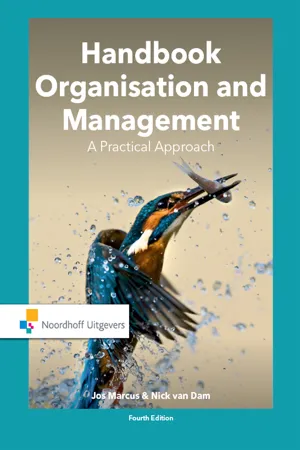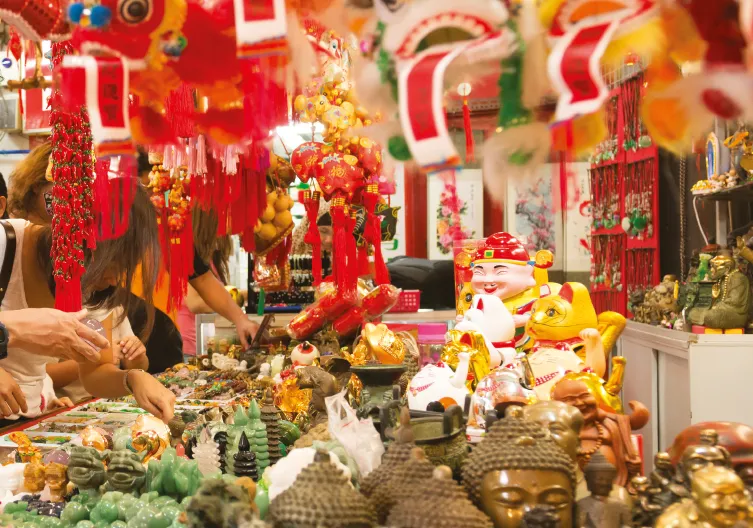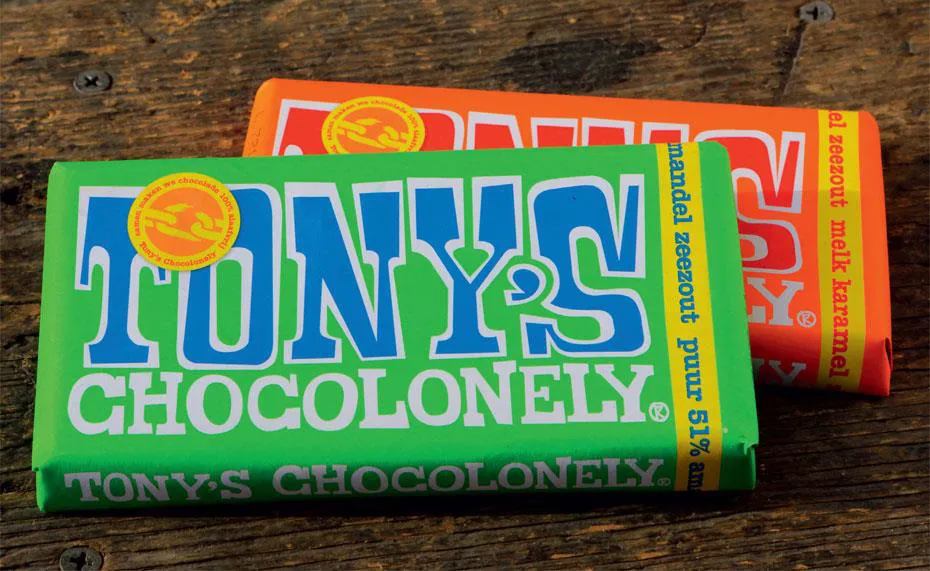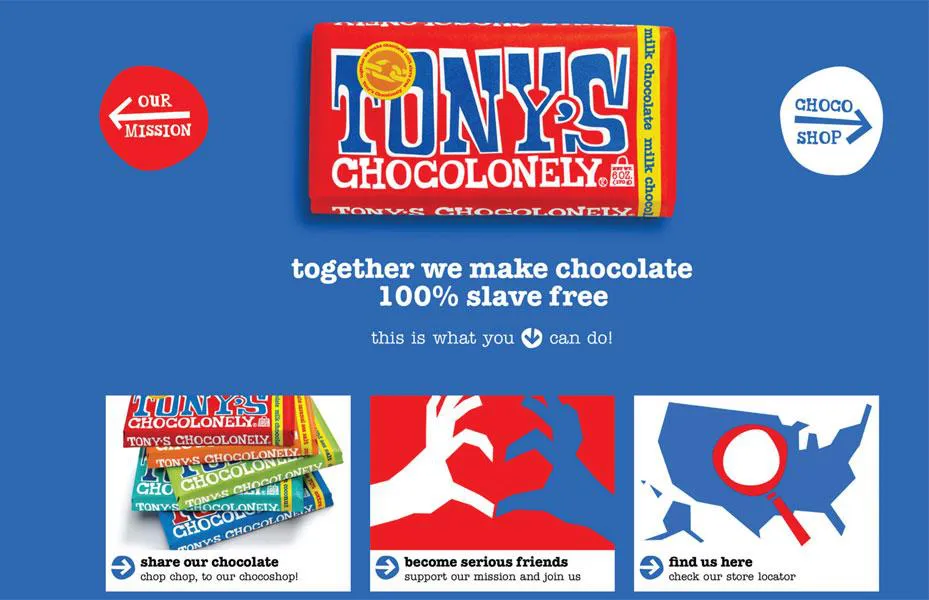INTERVIEW
INTERVIEW WITH CHIEF CHOCOLATE OFFICER HENK JAN BELTMAN FOR TONY’S CHOCOLONELY
The minds behind Tony’s Chocolonely are journalist Teun van der Keuken and Chief Chocolate Officer Henk Jan Beltman.
‘Tony’, derived from Teun van der Keuken, the journalist whose Dutch TV programme ‘De Keuringsdienst van Waarde’ (The Inspection Service of Value) ran investigations into slavery in the chocolate industry from 2002 through 2007. He found that, even then, there were still (child) slaves at work on West African cacao plantations; he engaged various chocolate confectionery manufacturers about the issue. Their lack of response made Teun decide to manufacture his own chocolate bars, driven by the notion that if you cannot beat them, you should join them. The solitude he experienced in his war on slavery resulted in the second half of the brand’s name, ‘Chocolonely’. The wrappers of the bars they sell are colourful and uplifting; they jump out at you from the supermarket shelves. Van der Keuken (1971), the son of Dutch filmmaker Johan van der Keuken, is a journalist and TV and radio producer. Following his shocking discovery that so much of the chocolate available in supermarkets is produced using slave labour, he began his slavery-free range of Tony’s Chocolonely chocolate bars in 2006. It was the first step on the road towards ‘100 percent slavery-free’ production, using no forced or child labour on African cacao plantations – initially, the notion of fully slavery-free products proved untenable, thus the ‘on the road towards’ caveat. As Van der Keuken is essentially a journalist and not an entrepreneur, Henk Jan Beltman assumed a majority interest in the company in 2010. Van der Keuken has not been involved in the brand for some years now. But he keeps a careful and critical eye on chocolate bar developments from the side-lines.
Henk Jan Beltman (1974) is the current Chief Chocolate Officer for Tony’s Chocolonely. Previously, he worked for sustainable brand Innocent. The socially responsible organisation, located in the Westergasfabriek in Amsterdam, has a small branch in Portland, USA, a turnover of 45 million Euros (2017) and a 16.7% market share in the Netherlands. His mission is to make the production of Tony’s Chocolonely 100 percent slavery-free by 2025.
What is your definition of corporate social responsibility?
Henk Jan: ‘I think the most important aspect, and one that we had not been taught before, is that money should be a means – not an end. To many companies, money is sacred. You work all day to make money so that you can spend it on your hobbies in the evenings and weekends. I feel that this is the issue with the economic system. We need to take the time to consider who we are, what we want, what we value. Once we manage to do so, money becomes a means; a means you should use to take part in the race, but not one that should be the reward for that race.’
Why did you choose to go with Fairtrade chocolate?
Henk Jan: ‘When Tony’s was founded, Max Havelaar (Fairtrade in the Netherlands) was the only existing system working to improve trade and living conditions for farmers. Their products are required to meet a number of minimum criteria with regard to social and environmental circumstances. Fairtrade is also the closest to our mission with regard to its focus on organising farmers and establishing fixed premiums. But certification is only a jumping-off point and a model on the path to an honest chain.’
100 % slavery-free, is that feasible?
Henk Jan: ‘Tony’s Chocolonely buys cocoa directly from farmer cooperatives in Ghana and Ivory Coast with whom we have a long-term relationship. We pay 25% on top of the regular cocoa prices normally offered to farmers, to help them improve their income past the poverty threshold. We are also able to offer traceably processed cocoa butter – an important step towards 100% slavery-free chocolate. The world is not a fair place. That is a topic we must not be afraid to discuss in public. Our chocolate bars aim to offer a visual, tangible reminder that gains in the cocoa industry are unevenly distributed: some bits are smaller or bigger than others. Once people realise that, we will have made our point.’
How about environmental awareness, is that part of your agenda?
Henk Jan: ‘Most certainly! To us, it makes sense to have farmers treat the environment responsibly. We encourage environmentally friendly cocoa production among the farmers from whom we purchase our cocoa beans. ‘Environmentally friendly’ means using as little pesticides as possible, and using fertiliser as professionally and economically as possible. Deforestation is right out. We offer training and education to the cooperatives we work with. Moreover, the wrappers of our bars have been adjusted to use FSC-recycled paper (Forest Stewardship Council), which means the wrapper is not coated with porcelain or chalk. The resources for our wrappers come from responsibly managed forests.’
How about the competition?
There is one on the market now: Chocolatemakers, also from Amsterdam. The companies know each other well. Chocolatemakers are the genuine Willy Wonka. They retrieve their cocoa beans from South America by sailing boat, which is a stroke of genius. The approach used by Tony’s Chocolonely and Chocolatemakers is the future, Henk Jan is convinced. ‘Fewer and fewer people are comfortable with major corporations. Guys like Enver and Rodney of Chocolatemakers handle cocoa beans day in, day out. Managers for Milka, Verkade, or Mars are too far removed from the production process. There is a return to passion for products you can taste and see it everywhere. Social enterprise is the future. There is more to life than making money. And success and idealism combine very well. And you need that idealism, or you will not get any recognition.’
What are your goals for Tony’s Chocolonely?
Henk Jan: ‘Teun van der Keuken, the founder, made tremendous efforts to ensure the global recognition of the problem in the cocoa chain. With that recognition established, the next step is to achieve success. We want to show the world that a company can be serious about a problem on the one hand, and still be commercially successful on the other. Therein lies my added value. Over the past few years, we were rated the best employer in the Netherlands, the strongest brand in the Netherlands according to NIMA, and one of the fastest growing companies in the Netherlands. Our end goal is to leave a lasting impression on the beginning of the cocoa chain – which requires us to be a source of inspiration for our competitors. We collaborate with 2,000 farmers, but there are 2 million of them out there. Our efforts are a drop in the ocean, and we have to apply our ...







